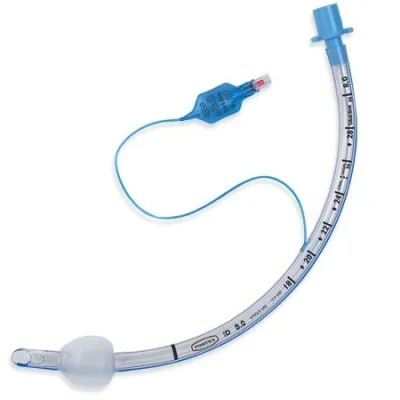Project Report For Endotracheal Tubes
Introduction
Project Report For Endotracheal Tubes is as follows.
A flexible tube called an endotracheal tube is inserted into the trachea (windpipe) through the mouth or nose. It can be used to support breathing in patients who have lung illness, chest injuries, or airway blockage as well as to help with breathing during surgery.
In hospitals and other medical institutions, endotracheal tubes are frequently used to administer emergency care to patients who are experiencing respiratory distress. These tubes are a crucial part of managing critical care, and they are used in a number of circumstances, such as during surgery, to treat airway blockage, and to assist ventilation in patients with respiratory failure.
Types Of Endotracheal Tubes
- Standard Endotracheal Tubes: These tubes, which may be introduced into the trachea by the mouth or nose, are constructed of flexible plastic or rubber. They are frequently used in emergency circumstances where fast airway access is required and come in a variety of sizes to accommodate various individuals.
- Cuffed Endotracheal Tubes: Endotracheal tubes with inflatable cuffs are identical to conventional tubes but seal around the trachea to stop air leakage. Patients with acute respiratory distress syndrome (ARDS) or those receiving mechanical ventilation frequently utilise these tubes.
- Tracheostomy Tubes: When a patient needs long-term mechanical ventilation, tracheostomy tubes are employed. These tubes are placed within the body by a tiny incision in the neck, and a collar or strap holds them in place. They enable patients to get continuous ventilator assistance and can be applied to gradually wean patients off of mechanical ventilation.
- Double-lumen Endotracheal Tubes: When someone is having thoracic surgery, double-lumen endotracheal tubes are utilised. During operation, each lung may be ventilated independently because of the two distinct lumens that these tubes have, one for each lung.

Uses Of Endotracheal Tubes
During Surgery :- During surgical operations, endotracheal tubes are used to assist preserve the patency of the airway. They enable anesthesiologists to provide oxygen and other gases straight to the lungs and can also be used to lessen the risk of surgical aspiration of blood or other fluids.
To Manage Airway Obstruction :- When a patient is experiencing respiratory distress, endotracheal tubes are utilised to address airway blockage. They can be applied to remove foreign items that might be obstructing the airway or to clear secretions from the airway.
To Provide Ventilatory Support :- When a patient is unable of breathing on their own, mechanical ventilation is given via endotracheal tubes. ARDS, pneumonia, chest or abdominal injuries, or any number of other illnesses might be at blame for this.
Project Report Sample On
Endotracheal Tubes
Get Completely Custom Bankable Project Report
Market Potential of Endotracheal Tubes
The market for endotracheal tubes is anticipated to reach a value of US$ 920.0 million in 2023 and grow at a 6.6% CAGR from that year through the end of the forecast period (2023–2030).
The market for endotracheal tubes is expected to expand as more surgical operations are performed as a result of the rising incidence of chronic conditions such cancer, cardiovascular disease, and lung injury. In addition, the rising older population, which is more susceptible to numerous chronic illnesses, and the increasing prevalence of ventilator-associated pneumonia, which affects 8 to 28 percent of critically ill patients undergoing mechanical ventilation, are some additional drivers anticipated to fuel market expansion. On the other hand, a scarcity of qualified experts and the significant risk of post-surgical complications following endotracheal intubation may hinder the expansion of the target market.
The market is divided into four types according to type: Regular tubes, Reinforced/Armoured tubes, Coated tubes, and Others. Due to an increase in surgical procedures caused by the frequency of respiratory illnesses, the standard endotracheal tube held the biggest market share.
In addition, the demand for standard endotracheal tubes is anticipated to develop profitably throughout the projected period as a result of the rise in VAP patients. Due to new technical advancements as well as its expanding application in surgery, the reinforced endotracheal tube market is also anticipated to expand throughout the projected period.

